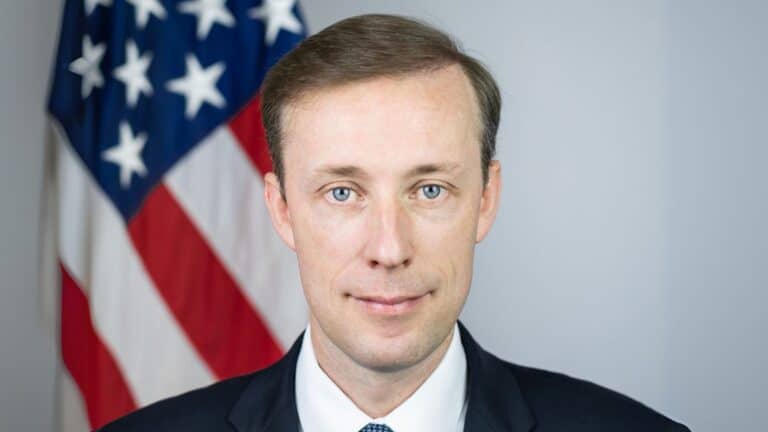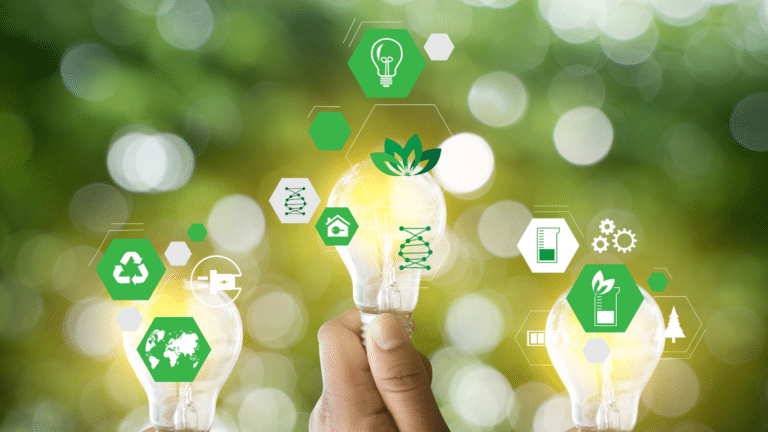(As Prepared for Delivery before the Senate Committee on Energy and Natural Resources. View the archived webcast here: https://www.energy.senate.gov/public/index.cfm/2019/5/full-committee-hearing-to-examine-ccus-and-to-receive-testimony-on-legislation)
Chairman Murkowski, Ranking Member Cantwell and Members of the Committee, thank you for inviting me here today to discuss the EFFECT Act and the Dept. of Energy’s CCUS programs. My name is Julio Friedmann. I am a Senior Research Scholar at Columbia University’s Center on Global Energy Policy at the School of International and Public Affairs.
It is an honor to appear again before this Committee to discuss CCUS, and timely. Since my last congressional testimony, the world has changed dramatically. Analysis from the Intergovernmental Panel on Climate Change and dozens of other organizations conclude that CCUS is essential to achieve important climate targets, including 2C, let alone 1.5. [1] In fact, without CCUS most models do not converge on a solution at all. Those that do conclude dramatically higher costs – more than twice to total needed investment, to hit the same targets. That’s why the Center for Global Energy Policy [2] has launched the Carbon Management Research Initiative, [3] which I direct. The Initiative draws on the extraordinary capabilities of Columbia Univ., including centers like the Earth Institute, Sabin Law Center, and faculty like Peter Keleman, Alissa Park, Bruce Usher, and Peter deMenocal.
The world of CCUS has also changed. [4] Today, eighteen CCUS projects operate worldwide and prevent 34 million tons CO2 from entering our air and oceans every year. Eight of these, the largest number for any country, are in the US. More are on the way, in part because of policies enacted by House and Senate, notably the 45Q amendments under the FUTURE act. [5] New projects, stimulated by these new laws, have been announced and more will be announced soon.
New studies by groups like the International Energy Agency, [6] Global CCS Institute, and the Energy Transition Commission [7] have underscored how CCUS is an essential component to supporting both economic growth and rapid, deep decarbonization. Many groups, ranging from Green New Deal advocates to the US Chamber of Commerce and all major oil companies, have stated strongly that man-made climate change is an urgent threat requiring more ambition and action. Many countries have begun to add CCUS to their climate and energy action plans. This includes new projects in China, Norway, and the Middle East; formal announcement of CCUS policy imperatives in the UK, Netherlands, and Canada; and highlighting of CCUS at the pending Clean Energy Ministerial in Vancouver later this month.
It should be clear from all of this that CCUS deployment is not some untested technology or greenwashing or a license to pollute. Quite the opposite – it is an overt, committed effort to deeply and quickly reduce emissions in a cost-effective way while sustaining economic growth and communities at risk. [8]
My testimony will focus on how the policies like the EFFECT Act [9], [10] (Enhancing Fossil Fuel Energy and Carbon Technologies) and government agencies like the US Dept of Energy can help the US maintain leadership, sustain jobs and communities, innovate quickly, and rapidly reduce carbon pollution. While additional policy, investment and action will be needed, the EFFECT Act could be an important component of success if enacted.
From 2013-2016, I served as Principal Deputy Assistant Secretary for the Office of Fossil Energy at DOE. That experience led me to better understand the value of that Office’s mission and those of the other Applied Energy offices. Importantly, well oriented and aligned R&D helps lay the foundation for scale-up through private investment and market deployment. At that time, we began rethinking the R&D portfolio within the Office of Fossil Energy, driven by the profound shifts in US and global energy markets; the incredible scale-up of US unconventional oil and gas production, export of LNG and crude oil, passage of the Paris Accords, and the stunning reduction in renewable energy prices. To respond to these dramatic shifts while serving the public, we instituted changes in the substance and direction of our R&D programs, in partnership with the National Energy Technology Lab:
- We decreased focus on coal gasification and increased focus on advanced power cycles
- We shifted from broad geological assessments and knowledge building in the Regional Partnerships toward a site-specific focus for regions through the CarbonSAFE program.
- We helped launch and lead two cross-cutting R&D programs: supercritical CO2 & SubTER.
- We began to explore issues and opportunities for application of CCS on industrial facilities and on modular chemical synthesis.
- We scaled up our program on CO2 conversion and issued the first grants on CO2 removal and direct air capture.
To ensure that our new directions would prove useful and valuable, we engaged industry, academic leaders, National labs, our international counterparts, and governmental leaders. It soon became clear not only would these new efforts prove important, but also that additional programs with additional funding would prove necessary. These required both an expansion of the identified lines and also new programs focused on large pilots, ultimately leading to a reimagined program of demonstration projects.
It also became clear that the primary task was improved environmental stewardship, chiefly in reducing CO2 emissions. That remained true regardless of the fuel source (coal, gas, biomass) or application (power or heavy industry). To accomplish this mission, we needed to extend well beyond benchtop research and bring technologies and clean energy systems close to market.
If any of these themes sound familiar, perhaps it is because most are embodied formally in the framework of the EFFECT Act:
- Although basic research remains important, both urgency and maturity of CCUS systems require us to emphasize applied R&D and demonstration – RD&D. It’s time to expedite deployment. With that framework, new authorization for efforts in large-scale pilots, EFFECT act provisions that support front-end engineering design (FEED) and ultimately demonstrations are exactly the right work to undertake.
- We should emphasize the mission more and fuels less. Both coal & gas are important parts of the US energy systems, and both require carbon management and CCUS to serve public interests in a carbon-constrained economy. China’s reluctance to receive recycling or petroleum coke, and the IMO’s new standards for maritime fuels, will likely bring more bitumen, municipal wastes, and other carbon-intensive fuels into US and global markets. My office was hampered by congressional language limiting our ability to spend R&D money based on fuel type. The EFFECT Act would lift this limitation.
- Heavy industry, including the manufacturing of steel, cement, refining, petrochemicals, fertilizer, and glass, is essential to the US economy and national security. It remains a major emitter of criteria pollutants and was 21% of US GHG emissions in 2017. Industry is a major employer, notably for organized labor and underserved minorities, and could be jeopardized by international border tariffs based on carbon content. The US has underinvested in advanced technology options for heavy industry, including ways to deeply reduce carbon pollution. A new innovation focus on clean heavy industry would help maintain a muscular US heavy industry, help us remain globally competitive, and could prove the cornerstone for future infrastructure and jobs investments. Doing so would also reduce conventional pollution, improving the quality of life for those living near such facilities and strengthening our national commitment to environmental justice.
- As mentioned before, the CarbonSAFE program helps to identify and de-risk potential CO2 storage sites. In many cases, companies, municipalities, and states who wish to launch a CCUS project lack the site-specific knowledge and data to conscience necessary investments. Already, this program has begun to unlock private investment in potential projects that harness policies like 45Q, state zero-emission power standards, and the CA low-carbon fuel standards. Early geoscientific characterization and de-risking is important and required public funds to help overcome key hurdles for private investment.
- Rapid technological progress in CO2 conversion and use (also called carbon utilization or CO2 recycling) [11] and in CO2 removal [12] has created opportunities unimaginable five years ago. Technology advancement, low-cost abundant clean power, and in part driven by the harsh mathematics of climate change urgency, have revealed CO2 removal to be essential. Technologies like direct air capture [13] and CO2 mineralization, combined with turning CO2 into fuels and building materials, can potentially become a new economic engine, with distributed manufacturing hubs in rural areas and cities alike. This vision is detailed by the National Academies – their recent report [14] calls for new funding and new authorities at the DOE.
All of these new imperatives are represented in the EFFECT Act. It would provide authorization to undertake this new and important work and proposes the appropriations levels necessary to have material economic effect. I see it as similar to the SunShot Initiative, which helped focus innovation in solar power and contributed substantively to achieving rapid and profound cost reductions in the US. The new authorizations of the EFFECT Act, matched by future appropriations, could achieve similar outcomes in a short number of years.
As essential as innovation investment is and as valuable as the EFFECT Act may prove, innovation alone will not bring these kinds of technologies to market. Many groups, including The Carbon Capture Coalition, the Global CCS Institute, Sec. Moniz at the Energy Futures Initiative, and my own colleagues at the Columbia Center on Global Energy Policy, stress that additional policies are needed to accelerate deployment and align markets for emissions reductions. These are a few important additional policy options the Committee may wish to consider:
- Infrastructure: Today, almost all CCUS is accomplished through the 5000 miles of shared CO2 pipelines. Deployment of conventional CCUS will require thousands of miles more, mostly in the form of small regional networks that serve communities and regions while storing in local, high-quality geological storage sites. [15] Laws such as the USE IT Act, currently under consideration, could reduce risk and ambiguity for pipelines and make financing and operation easier. Additional incentives, such as block grants to states or regions, a competitive grant program managed by the Office of Fossil Energy, or something like a bespoke investment tax credit, could help greatly.
- Capital Treatment Incentives: CCUS projects of all kinds require 100’s of millions to billions of dollars before the first ton is stored. Policies like private activity bonds, master limited partnership treatments, accelerated depreciation, investment tax credits, and economic activity zone designations would stimulate investment. [16]
- Clean Energy Standards: A well-designed national zero-emissions power standard or clean energy standard would allow CCUS and other clean energy options like advanced nuclear, geothermal, and CO2 removal approaches to gain access to private financing. Recent legislative proposals [17] could provide this necessary support.
- Public investment: Direct public support of CCUS into heavy industry, in particular public-private partnerships for cement, steel, and petrochemicals, would help the US gain familiarity and speed with these approaches, while simultaneously stimulating construction, innovation, and regulatory certainty. This would quickly make the US the unambiguous leader of providing low-carbon products to market.
- A price on carbon: Our scholarship at CGEP has helped to assess the performance of various carbon pricing policies on national emissions. Recent work by one of the CGEP scholars (Dr. Noah Kaufman) has shown not only how a carbon tax might perform, but also how it could complement other greenhouse gas mitigation policies as well. [18]
In summary, I see the EFFECT Act as important legislation to help drive innovation. It would deliver valuable support to critical parties and actors building a clean energy future. I commend its authors for their insight and excellence in crafting the legislation. I also see it as one of many critical policy actions needed to meet the needs of the global climate and maintain economic security and strength. With that, I look forward to your comments and questions.
[6] International Energy Agency (IEA), World Energy Outlook 2018, November 2018.
[7] Energy Transition Commission, 2018, Mission Possible: Reaching near-zero emissions from harder-to-abate sectors by mid-century: www.energy-transitions.org
[14] Negative National Academies of Science, Engineering, and Medicine, 2018, Negative Emissions Technologies and Reliable Sequestration: A Research Agenda, Washington, DC: The National Academies Press: https://doi.org/10.17226/25259




